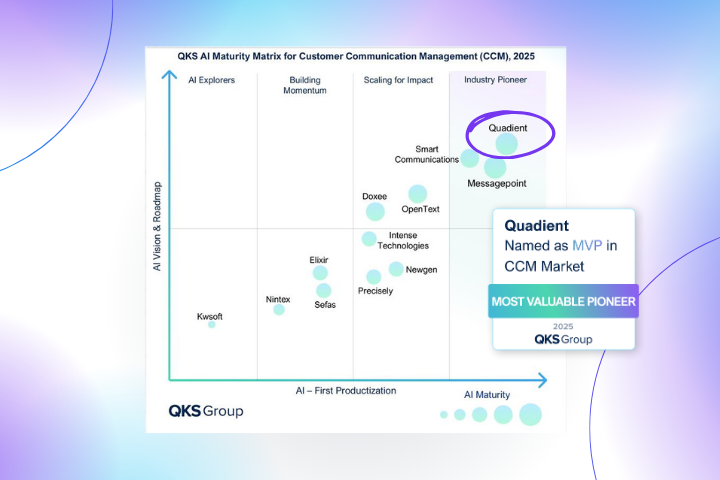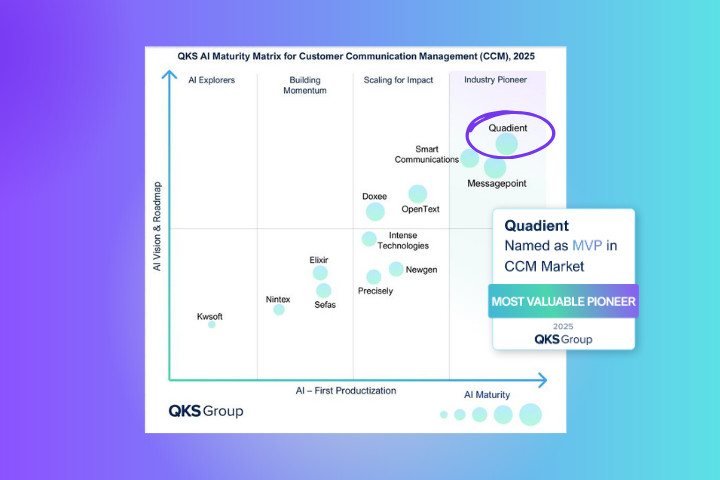
Your business processes countless invoices and payments every day—and with every transaction, there’s risk. Payment fraud is on the rise. Errors can go unnoticed. And even well-meaning employees can mishandle financial data. Without the right safeguards in place, your security, cash flow, and reputation are on the line.
That’s why your accounts payable (AP) process needs security checkpoints—clear controls that verify transactions, prevent fraud, and ensure compliance at every stage. Think of them like airport security screenings: before a payment “boards,” it must pass through multiple layers of verification to confirm it’s accurate, authorized, and legitimate.
Strong AP internal controls help:
- Mitigate risk by building checks and balances into AP processes
- Increase accuracy through digitization and automation
- Improve accountability and lighten the load for AP teams
- Strengthen supplier relationships through simple, on-time payments
- Ensure you’re prepared for audits and to meet compliance requirements
With AP automation, these checkpoints become even more effective, reducing the chance of fraud and errors and speeding up payment cycles.
Let’s walk through five essential AP internal controls, how they help you reduce risk at every step of the payment process, and how AP automation drives results.
Checkpoint 1: Distribute financial control across your team
In any secure environment, no single person should have unchecked access to critical operations. Just like airport security ensures that different teams handle different tasks—ID verification, baggage screening, and final boarding checks—your AP process needs multiple stakeholders.
The person who enters invoices should not be the same person who approves them for payment. The person who prepares checks should not be the same person who signs them. And, the person who reconciles the AP ledger should not be the same person who processes payments.
Segregation of duties (SoD) distributes financial control across the AP process. One employee enters invoices, another approves them, and a third handles payments. With multiple stakeholders involved, no single person has the power to manipulate payments without oversight and there’s a lower risk of fraud.
Here’s how responsibilities can be distributed across the AP team:
- Invoice processing: One person matches invoices to purchase orders and records them in the accounting system.
- Payment approval: Someone with a higher level of authority verifies invoices and documentation, and approves payments.
- Payment issuance: Another person prepares and signs checks, or initiates electronic payments.
- Reconciliation: Someone independent of the payment process reconciles the accounts payable ledger with vendor statements and bank statements.
When it comes to SofD, AP is a built-in security system. It simplifies SofD, removes manual effort from tasks, and makes it tougher to bypass controls. Each team member has their own role with specific permissions. And built-in audit trails track every action for accountability and transparency.
Checkpoint 2: Implement three-way matching for invoice accuracy
Just like airport security scans baggage to catch prohibited items before they make it onto the plane, your AP process needs a system to detect errors, duplicate payments, and unauthorized transactions before money leaves your account.
Manual invoice processing is time-consuming and prone to oversight. Issues like mismatched totals, missing approvals, and duplicate payments can easily fall through the cracks.
Three-way matching acts as your built-in security scanner, ensuring that only legitimate transactions pass through. Here are the three checkpoints for matching:
- Purchase order check: Ensure the invoice details match the original purchase order.
- Report verification: Confirm that the goods or services were actually received.
- Invoice cross-check: Validate that the invoice amount aligns with what was ordered and delivered.
AP automation makes three-way matching easier, faster, and more reliable. AI-powered invoice capture extracts and validates invoice data automatically, eliminating manual entry errors. Real-time matching compares invoices with purchase orders and receiving reports and flags mismatches before payment approval. And, automated discrepancy alerts let your team resolve issues before funds are disbursed.
Checkpoint 3: Standardize approval workflows
Your AP approval process is like air traffic control. Without clear routes and procedures, invoices get lost in the shuffle. When approvals happen via scattered emails, verbal confirmations, or outdated spreadsheets, they can be delayed, misplaced, or even approved without proper oversight.
A standardized approval workflow helps invoices move efficiently and securely from submission to payment. It routes invoices based on amount, vendor, or department, depending on the level of oversight required, assigns dedicated signers at every step to prevent unauthorized payments, and keeps activity on one platform rather than fragmented email chains.
AP automation eliminates inefficiencies by removing manual processes and enforcing a structured, transparent workflow. Zero-touch invoice routing is faster and more secure, while digital audit trails track every step for accountability and compliance. You can:
Set up multi-level approval workflows based on invoice amount or vendor risk level.
- Use automated approval notifications to ensure prompt reviews without delays.
- Maintain a clear audit trail for compliance and accountability.
Checkpoint 4: Verify payment
Processing payments without verification is like letting passengers board their flights without checking their IDs and boarding passes.
Strong payment controls ensure only authorized transactions go through. By requiring multiple levels of verification, your AP team can lock down outgoing payments and keep financial losses at bay. Multiple qualified stakeholder review and authorize every payment before its processed and reconcile it against invoices and purchase orders to catch duplicates or unauthorized transactions.
AP automation strengthens payment controls through these built-in safeguards:
- AI-driven fraud detection: Automatically flags duplicate invoices, unusual payment requests, and anomalies before funds are released.
- Real-time payment validation: Ensures only approved invoices are processed, preventing unauthorized transactions.
- Automated compliance checks: Enforces company policies in every payment, reducing the risk of policy violations or regulatory issues.
Checkpoint 5: Reconcile accounts and monitor transactions
Before a plane takes off, pilots and ground crews double-check every system for issues. In the same way, account reconciliation serves as the final security checkpoint in your AP process, catching discrepancies before they cause financial turbulence.
Without regular reconciliation, errors, missing payments, and even fraud can go undetected and it’s harder to spot financial discrepancies and maintain reliable records for compliance. By comparing AP transactions with bank statements and general ledger entries, scheduling regular reconciliation intervals, and establishing independent reviews, you know everything checks out.
AP automation with ERP system integration syncs transactions in real time and automates reconciliation to instantly detect and flag missing or mismatched transactions. It gives AP teams a real-time AP snapshot and keeps reporting up to date.
Keeping your AP security checkpoints strong
Maintaining security means keeping up with evolving threats. Financial risks, compliance regulations, and business operations are constantly changing. And what worked yesterday might not be enough tomorrow.
To keep your AP security checkpoints strong requires continuous monitoring and improvement. Regular oversight and audits help identify discrepancies early, ensuring your controls remain aligned with current regulations and best practices. Ongoing training keeps employees on the same page about why internal controls matter and how to uphold them. So they’re more likely to follow procedures. Finally, adapting and improving controls as your business grows ensures they remain strong, scalable, and effective in preventing fraud, errors, and inefficiencies.
Ready to take off? Secure your payment process with Quadient AP
With Quadient AP Automation, every transaction passes through built-in security checkpoints–internal controls that ensure accuracy, accountability, and compliance. So you can process payments with confidence and control.
Schedule a demo today and see how Quadient AP Automation keeps your financial operations running smoothly and securely.








